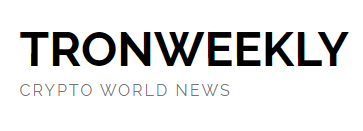March 6, 2025 by Vaigha Varghese
One of the reasons that the crypto world is growing is its use of cryptographic security. This security offers an invisible shield that protects the mechanism from manipulation and theft of assets. All popular consensus mechanisms, such as Proof of Stake and Proof of Work, rely on algorithms like the Elliptic Curve Digital Signature Algorithm (ECDSA) and SHA-256 to ensure transactions are tamper-proof and decentralized. Unfortunately, a disruptive force looms called quantum computing. As it accelerates, it threatens to crack these cryptographic foundations, jeopardizing blockchain consensus across the crypto landscape. The industry must confront these challenges head-on. Here is a look at the threat and possible solutions.
Now that crypto has become a common payment method across several online platforms, security is a vital part of any blockchain. Otherwise, users are likely to lose their assets and have low trust levels in several blockchains. A leading casino like Shuffle Crypto Casino that has been reviewed by Casino. Guide uses crypto as the primary means of payment. Any leakage or hacking of these blockchains would mean its customers would lose cash or fail to trust the casino.
Why is Quantum a Menace?
Unlike classical computers, which process bits as 0s or 1s, quantum computers use qubits. They harness the superposition and entanglement to solve specific problems exponentially faster. Out of all possibilities, two quantum algorithms, Shor’s and Grover’s, pose the greatest risks to blockchain security.
Shor Algorithm
Shor’s algorithm targets asymmetric cryptography, such as ECDSA. It is widely used to generate public-private key pairs in crypto wallets and consensus protocols. ECDSA’s strength lies in the elliptic curve discrete logarithm problem, which creates a puzzle that classical computers cannot handle efficiently. However, a quantum computer running Shor’s algorithm could derive private keys from public ones in polynomial time. This would allow attackers to forge signatures, drain wallets, or manipulate consensus mechanisms. The system can be used to hijack validator votes in a proof of stake system or spoof transactions in permissionless networks.
Gover’s Algorithm
On the other hand, Gover’s algorithm accelerates unstructured searches which impacts symmetric cryptography and hash functions like SHA-256. These security features are key in the proof of work and block validation procedures. It’s quadratic speedup halves the securities of these systems.
Here is an example: if you were to use it to crack a 256-bit hash, it would drop the 256 keys from 2*128 operations to 2*64. While this would not cause an immediate collapse of the system, it may gradually destabilize the network by lowering the trust levels.
When Is This Likely to Happen
The concept of quantum computing is no longer fiction. For example, Google’s Willow Chip, which was launched in 2024, solved specialized problems in minutes that would take classical supercomputers billions of years. Current quantum machines have roughly 1,200 qubits. Therefore, they fall short of the 1,500-4,000 error-corrected qubits needed to break ECDSA. However, experts forecast stronger quantum computers within 10-20 years. The time may be shorter as the industry is moving at break-neck speed.
Possible Solutions
There are several initiatives that the crypto world can take to redeem the situation. There are also new technologies that promise resilience against such quantum threats. Here are some options that they can consider:
Developers may consider a dual-signature system, such as pairing ECDSA with a PQC algorithm. Transactions or blocks signed with both ensure compatibility today while preparing for quantum risks. This phased transition minimizes disruption while making it hard for quantum computers to crack the algorithm. For blockchains reliant on SHA-256, developers can use SHA-3 or stateful hash-based signatures like XMSS (used in Quantum Resistant Ledger). This system resists quantum speedup, which prevents the halving of the hash.
Another option is quantum key distribution (QKD). It uses quantum mechanics for secure key sharing, a solution that could protect validator communication or cross-chain bridges. Finally, they can consider replacing ECDSA with lattice-based algorithms like FALCON-512 could secure key pairs across blockchains. FALCON resists Shor’s algorithm by leveraging hard mathematical problems quantum computers struggle to crack.
While quantum computing threatens blockchains, there are several solutions to deal with this. Developers should consider them when quantum computing is still in its infancy to safeguard against possible trust problems in the future.

 5 months ago
21
5 months ago
21




 English (US) ·
English (US) ·